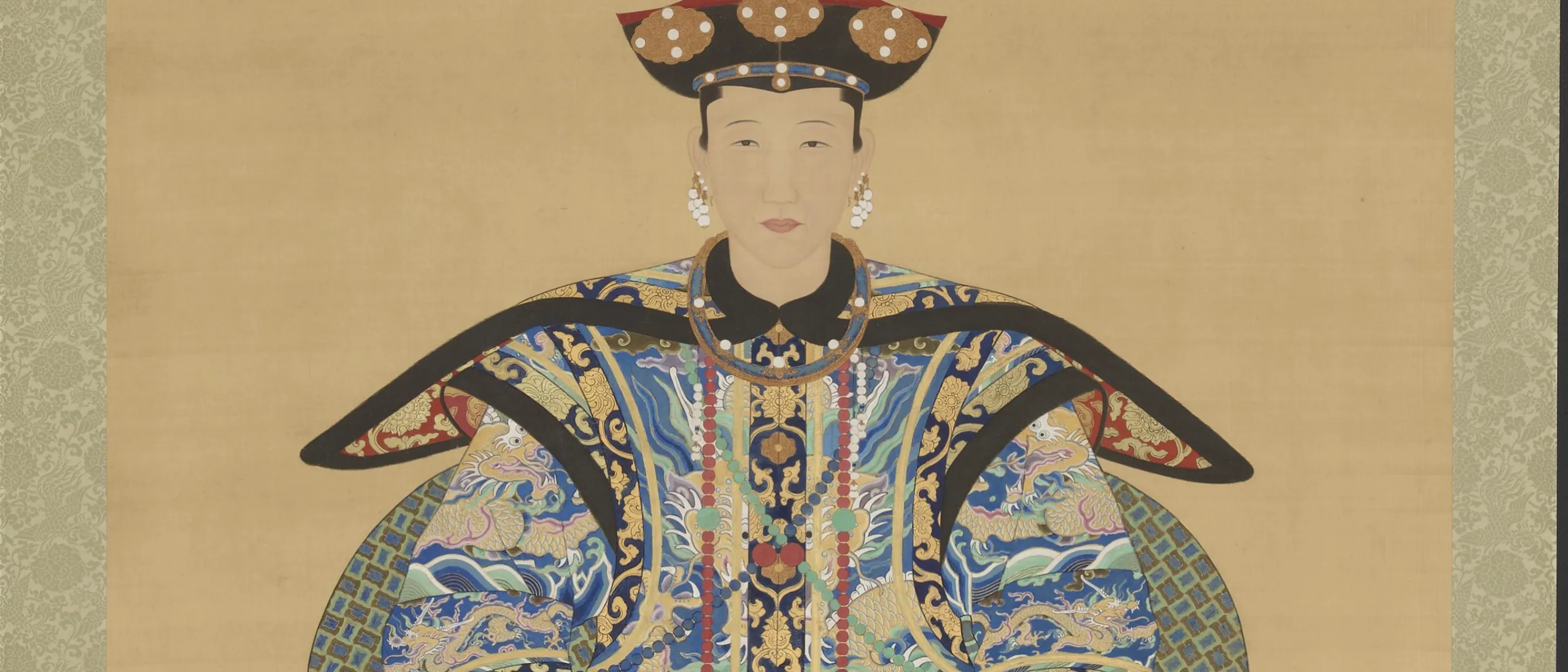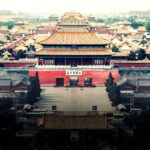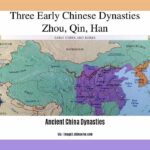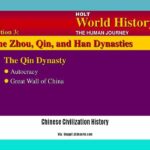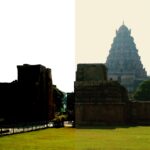The Qing dynasty, taking the reins of power in 1644, wasn’t just another chapter in China’s extensive history – it was the final chapter in a story spanning millennia. This dynasty, which endured for a remarkable 260 years, left an indelible mark on China’s cultural, political, and social landscape.
The Qing Dynasty: China’s Last Empire
Under the Qing dynasty, China stretched further than ever before, encompassing not just the traditional heartland, but also vast territories like Manchuria, Tibet, and Mongolia. The early Qing period, particularly during the reign of the Kangxi Emperor, was marked by peace, prosperity, and cultural flourishing. The arts and Confucian teachings were actively promoted, solidifying the dynasty’s authority and legacy.
However, like many empires throughout history, the Qing dynasty eventually faced significant challenges. By the late 18th century, internal conflicts arose, foreign powers began encroaching on Chinese sovereignty, and the economy faced new pressures. Events like the Taiping Rebellion and the Opium Wars exposed vulnerabilities within the Qing military and highlighted growing corruption within the government.
These challenges culminated in the Xinhai Revolution of 1911, which overthrew the Qing dynasty and brought an end to centuries of imperial rule in China. While the dynasty fell, its influence continued to shape China’s transition into the modern era, leaving an indelible mark on the nation’s identity and development. To truly understand China’s past and present, exploring the complexities of the Qing dynasty is essential.
If you’re eager to delve deeper into the annals of history, our extensive history knowledge base offers a treasure trove of information.
How Long Did the Qing Dynasty Rule?
The Qing dynasty, China’s final dynasty, held power for an impressive span of nearly three centuries – from 1644 to 1912. This makes it one of the longest-ruling dynasties in Chinese history.
The Qing dynasty reached its zenith during the reign of the Qianlong Emperor, from approximately 1735 to 1796. Under his rule, China expanded its territory significantly, encompassing a vast region from Siberia to Tibet.
However, like the turning of a tide, the Qing dynasty began to falter. The late 18th century ushered in a period of internal rebellions, foreign interference, and economic hardship, weakening the dynasty’s grip on power.
The Xinhai Revolution of 1912, led by Sun Yat-sen, ultimately led to the downfall of the Qing dynasty, marking the end of imperial rule in China after over two thousand years.
In Summary:
- The Qing dynasty ruled for 268 years (1644-1912).
- The reign of the Qianlong Emperor marked the Qing dynasty’s peak.
- The Xinhai Revolution in 1912 led to the dynasty’s collapse.
What Was the Qing Dynasty’s Family Name?
The Qing dynasty wasn’t simply another ruling family; they were the Aisin Gioro clan, and unlike many dynasties before them, they were Manchu, not Han Chinese. This distinction was significant, as it represented a shift in power dynamics within China.
The Aisin Gioro clan, with their unique customs and traditions, ascended to power, bringing a blend of old and new to China’s governance. They incorporated some of their Manchu traditions while retaining aspects of the previous Ming Dynasty’s administrative structures.
Under their rule, China’s territory expanded considerably, encompassing regions such as Mongolia, Tibet, and Xinjiang. Managing such a vast empire presented numerous challenges, including rebellions, internal power struggles, and pressure from foreign powers seeking to exert their influence.
The extent to which the Qing Dynasty’s Manchu background influenced their decisions and governing style is a subject of ongoing debate among historians. Some experts suggest they were adaptable, incorporating Chinese customs and practices to solidify their rule. Others propose they maintained a strong Manchu identity, which significantly shaped their policies.
The Qing Dynasty’s reign remains a fascinating and complex period in Chinese history, prompting continued research and varying interpretations. Their rule marked a pivotal point in China’s trajectory, the echoes of which still resonate today.
What Was the Ethnicity of the Qing Dynasty?
The Qing Dynasty presents a unique chapter in Chinese history as a dynasty with roots outside of the traditional Chinese heartland. Unlike the Ming Dynasty they succeeded, the Qing rulers were not Han Chinese. They originated from Manchuria, a region with its own distinct culture and people.
The Aisin Gioro clan, a powerful force from the Manchurian plains, saw an opportunity amidst the waning years of the Ming Dynasty and seized it, ultimately assuming control over all of China.
Recognizing the challenge of imposing their ways on such a vast and culturally diverse population, the Qing rulers ingeniously chose to embrace aspects of Han Chinese traditions, blending them with their own Manchurian customs. This fusion of cultures became a defining characteristic of the Qing Dynasty.
This wasn’t merely a superficial gesture; it was a strategic move to foster acceptance among their newly acquired subjects.
The Qing Dynasty, particularly under Emperors Kangxi, Yongzheng, and Qianlong, ushered in a golden age for China. Under their leadership, the economy thrived, arts and culture flourished, and the empire reached its territorial peak, stretching from Siberia to the valleys of Tibet. The Qing Dynasty’s influence resonated throughout the empire, evident in everything from grand architectural marvels like the Forbidden City to the intricate details of porcelain and embroidery.
However, like all empires, the Qing Dynasty encountered challenges. The Opium Wars with Great Britain exposed weaknesses in the Qing military, and internal struggles like the Taiping Rebellion revealed cracks in their seemingly unyielding authority.
These events foreshadowed a shift in the dynasty’s fortunes. By the late 19th century, the once-mighty Qing Dynasty struggled to keep pace with a rapidly evolving world. In 1911, the Xinhai Revolution swept through China, ending centuries of imperial rule and marking a new era for the nation.
The Qing Dynasty’s impact on China is undeniable. The grand palaces, intricate artwork, and stories passed down through generations stand as testaments to their reign. The Qing Dynasty serves as a profound reminder that history is not merely a collection of dates and names; it’s a tapestry woven with the rise and fall of empires, the fusion of cultures, and the enduring legacies that continue to shape our world.
What Religion Did the Qing Dynasty Follow?
The Qing Dynasty, which ruled China from 1644 to 1911, presents a fascinating narrative of religious diversity and tolerance. Two major religions, Confucianism and Buddhism, held significant sway within society. Confucianism, with its focus on ethics and social harmony, provided a foundation for social order. Buddhism, on the other hand, offered a path to enlightenment and explored concepts like reincarnation, attracting a large following.
However, the religious landscape of the Qing Dynasty extended beyond these two prominent faiths. Others, such as Taoism, emphasizing harmony with nature, Islam, brought to China by traders from Arabia and Persia, and Shamanism, a spiritual practice involving communication with the spirit world, also found adherents within the empire.
The Qing Dynasty’s approach to this religious diversity is particularly noteworthy. They adopted a remarkably tolerant stance towards various faiths. Imperial policies protected religious freedom and respected different religious practices.
Further enriching this tapestry of faiths, the Qing Dynasty embraced a concept known as syncretism. This involved blending elements from various religions, particularly Confucianism, Buddhism, and Taoism, into a unique cultural blend. For instance, many temples from the Qing era were dedicated to deities from multiple religions, and Qing emperors often participated in rituals that incorporated elements from diverse traditions.
Adding yet another layer to this intricate religious landscape, the Qing Dynasty remained open to external influences. Christianity, for example, entered China with Western missionaries in the 17th century, attracting converts among the Manchu elite and the general populace. The influence of foreign religions, including Christianity, added a unique hue to Chinese culture and society, the traces of which are still visible today.
The question of the Qing Dynasty’s religion doesn’t have a simple answer. It was a meeting point for a variety of faiths, where tolerance, syncretism, and openness to foreign influences created a dynamic religious landscape. Their story continues to fascinate and inspire further study.
What Is the Oldest Dynasty in China?
China’s ancient history is filled with stories of powerful dynasties, but determining the very first is a journey shrouded in mystery. The Xia Dynasty, believed to have ruled from around 2070 to 1600 BCE, is often cited as the first dynasty in China. However, concrete evidence of the Xia Dynasty’s existence remains elusive, with historians continuing to search for artifacts and remnants to shed light on this early period of Chinese civilization.
The Shang Dynasty (1600-1046 BCE) stands on firmer ground, considered the first dynasty supported by substantial archaeological evidence. The Shang Dynasty is renowned for its remarkable advancements in astronomy, mathematics, and the development of a rudimentary Chinese writing system.
The mantle of leadership then passed to the Zhou Dynasty (1046-256 BCE), an era notable for its impressive eight-century reign. During this period, China witnessed significant transformations. Major philosophical schools, like Confucianism and Taoism, emerged and spread throughout the land. The Zhou Dynasty also introduced the concept of the “Mandate of Heaven,” a revolutionary idea suggesting that a ruler’s legitimacy stemmed from divine approval.
While the Qin Dynasty (221-206 BCE) only held power for a relatively short time, its impact was profound. The Qin Dynasty achieved the unprecedented feat of unifying China under a single imperial rule for the first time. This monumental task was accomplished under the leadership of Qin Shi Huang, an ambitious and often controversial figure. While known for his iron-fisted rule and infamous book burnings aimed at suppressing dissenting views, Qin Shi Huang also commissioned the construction of the Great Wall, one of the world’s most iconic wonders.
Why Was the Qing Dynasty Considered a Foreign Dynasty?
The Qing Dynasty’s unique position in Chinese history stems from its origins. Unlike previous dynasties, the Qing rulers were not Han Chinese, the dominant ethnic group in China. Instead, they hailed from Manchuria, a region beyond the Great Wall. This distinction led many within China to view them as “foreign” rulers.
The Qing’s distinct governing style further contributed to this perception. They retained many of their own traditions and administrative systems from Manchuria. While they incorporated elements of Chinese culture to facilitate acceptance, differences remained evident.
The Qing Dynasty’s interactions with other nations also fueled perceptions of their foreignness. Their active trade and diplomatic relations with European powers fostered suspicion among some in China who questioned the dynasty’s loyalties.
Furthermore, achieving complete integration with the local Han Chinese population proved challenging. Linguistic differences, cultural disparities, and differing social systems hindered a seamless unification.
The Qing Dynasty’s “foreign” label resulted from a confluence of factors: their non-Han origins, distinct governing style, close ties with foreign powers, and ongoing challenges integrating with the local populace.
However, it’s important to remember that historical narratives are complex and multifaceted. Further research and new discoveries may well provide additional insights into this unique dynasty.
Which Dynasty Ruled China for Almost 400 Years?
While the Qing Dynasty had a significant reign, it wasn’t the dynasty that ruled China for nearly four centuries. That distinction belongs to the Tang Dynasty, which held power for an impressive 289 years, from 618 to 907 CE.
This era, often referred to as the “Golden Age” of China, represents a period of unparalleled prosperity, cultural achievement, and territorial expansion. The Tang Dynasty’s contributions to art, literature, and technology left an indelible mark on Chinese civilization and continue to inspire awe and fascination today.
How Long Did the Han Dynasty Rule?
The Han Dynasty, a pivotal era in Chinese history, ruled for an impressive 408 years, from 206 BCE to 220 CE. This period, often hailed as a golden age for China, was marked by significant advancements in various fields.
The Han Dynasty’s reign is divided into two periods:
- Western Han: This period lasted from 206 BCE to 9 CE.
- Eastern Han: This period spanned from 25 CE to 220 CE.
Between these two periods, the Xin Dynasty briefly interrupted Han rule, lasting from 9 CE to 23 CE.
The Han Dynasty’s longevity can be attributed to a variety of factors, including a sophisticated economic system, the adoption of Confucianism as a state ideology, and a well-structured political system. The Han Dynasty’s legacy continues to resonate within China, shaping many aspects of Chinese culture and identity.
When Was the Qin Dynasty Established?
The Qin Dynasty, a pivotal force in shaping Chinese civilization, emerged in 221 BCE. It was during this year that a determined leader named Qin Shi Huang, leading the state of Qin, successfully conquered the six other warring states that had long been embroiled in conflict. This victory marked the end of the Warring States period and ushered in a new era of imperial rule in China.
While some historians suggest that the unification process might have been a more gradual process, with Qin Shi Huang gradually gaining control over certain regions before 221 BCE, evidence remains inconclusive.
The year 221 BCE holds immense significance as it marks the year Qin Shi Huang formally declared himself “Huangdi” – a title signifying “Emperor.” This marked a departure from the previous title of “king” and symbolized a more elevated and centralized form of rule. The Qin Dynasty, although short-lived, left an indelible mark on China’s historical and political landscape.
Who Was the Last Ruler of the Qing Dynasty?
As the Qing Dynasty navigated a period of decline, marked by internal unrest and increasing foreign pressure, a young boy named Puyi ascended to the throne. At just three years old, he became the last emperor of China.
His reign, however, would be short-lived. The Xinhai Revolution of 1911, fueled by widespread dissatisfaction with the Qing government, proved to be a turning point.
In February 1912, Puyi was compelled to abdicate, bringing an end to the Qing Dynasty and centuries of imperial rule in China. While Puyi was the last emperor to hold the throne, some historians argue that his mother, Empress Dowager Longyu, wielded significant influence, particularly during the dynasty’s waning years.
The transition from the Qing Dynasty to the Republic of China marked a period of profound change, shaping the course of modern Chinese history.
Key Points of the Qing Dynasty
- The Qing Dynasty, the final imperial dynasty in Chinese history, ruled China from 1644 to 1911.
- Under their rule, China’s boundaries expanded significantly, encompassing Manchuria, Tibet, and Mongolia.
- The early Qing period, especially during the Kangxi Emperor’s reign, was characterized by growth, peace, and cultural prosperity.
- The late 18th century saw internal conflicts, foreign encroachment, and economic challenges, weakening the dynasty.
- The Taiping Rebellion and Opium Wars revealed vulnerabilities in the Qing military and exposed government corruption.
- The Xinhai Revolution of 1911 led to the dynasty’s overthrow, ending centuries of imperial rule in China.
- The Qing Dynasty’s legacy is multifaceted, shaping China’s modern identity, development, and understanding of its past and present.
